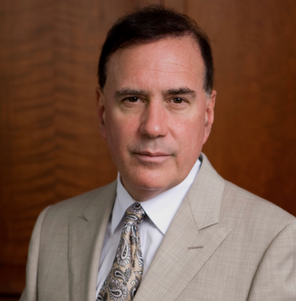David Gauntlett joins us for a conversation on the intersection of intellectual property, insurance and risk management. In Part II, David explains how insurance and IP are uncontestably married to each other.

Patent infringement is the most difficult coverage to obtain under standard form commercial general liability policies, especially since the introduction of a robust intellectual property exclusion in 2001. There is simply no coverage under the standard commercial general liability “CGL policy” for such claims.
That is not the case with Directors & Officers (“D&O”) policies which may provide coverage for an individual officer or director. In fact, the least expensive pathway to intellectual property insurance coverage for companies who suspect their operational activities may generate exposure for such claims is procurement of a D&O policy. Thus, smaller companies that typically seek such coverage are well advised to consider a D&O policy. There are express intellectual property coverage policies available that provide defense only coverage. However, D&O policies provide both defense and indemnity for such claims, and with proper negotiations can include a “defense only” segment of the policy that does not diminish coverage available for defense fees that will be incurred.
Trade secret claims are much like patent infringement claims—difficult to secure coverage. However, on many occasions, such claims are intermingled or conjoined with alleged claims for theft of proprietary information. Absent broad expansive language in the intellectual property exclusion, such proprietary rights claims may fall outside the scope of IP exclusions, and thus within potential coverage.
Proprietary idea theft is a form of unfair competition that can involve “use of another’s advertising idea in your ‘advertisement’” under a standard CGL offense (f) provision, or on occasion, a form of invasion of privacy under offense (e) so long as a person’s right of privacy is affected. Where an individual is a claimant, this element can be readily satisfied, and the form of invasion of privacy most typically implicated under this offense is making private facts public. But, intrusion upon seclusion can also come into play where improper access to proprietary information is itself a chargeable element of the suit.
What kind of issues within this realm do you address and what kind of companies come to you for help?
To date, I have represented over 15% of the Fortune 500 in my 38 years of practice. Typically, our current clients tend to be mid-cap companies and occasionally smaller companies who may only have a commercial general liability policy but are facing significant defense fee exposure in intellectual property lawsuits. If the claimant and the defendant have prior business relationships, that can be challenging especially where directors & officers policies are in play. D&O policies often include insured vs. insured exclusions that raise questions about coverage for actions between prior participants in the same enterprise and whether such conduct is outside the scope of coverage of the policy issued to the initial entity in which they were all participants.
Note, however, that following a sale, disputes arising out of the representations made and payment elements negotiated between the parties can create coverage under a new D&O policy issued to the purchasing entity or even the selling enterprise. That is, where a selling corporate officer and shareholder are involved, maintaining a tail for the existing coverage is key ( i.e., an ability to late report claims after the termination of the officer or shareholder’s relationship with the prior enterprise). In many instances, it’s less expensive to maintain the full life of the existing policy and purchase a tail as the coverage expires.
Another area to be mindful of is overseeing insurance brokers and making sure that they advise policyholders about the importance of securing coverage for the disputes that may arise out of the disinvestment of former officers and shareholders in the initial company. In one case, when a broker failed to recommend the purchase of a tail or extending the current policy in effect, the policyholder was left bare to a lawsuit filed within weeks of the policy’s expiration. As no claim was made within the policy period following its expiration, the broker’s liability coverage was the only pathway to recovery for that insured even though maintaining the existing coverage would have solved its problem by payment of minimal premium (less than $10,000) compared to the hundreds of thousands of dollars in defense fees spent in the litigation.
What are some of the challenges in handling coverage issues for intellectual property, starting with the idea that coverage law and intellectual property are separate practice areas in most law firms, but you still handle copyright, trademark, trade secret, and patent issues?
To understand coverage for intellectual property, it’s best to start with the tort that creates liability potentially falling within the coverage. An example of this is the case of Frog, Switch & Mfg. Co. v. Travelers Ins. Co., 193 F.3d 742, 750 n.8 (3d Cir. (Pa.) 1999) where the court stated:
We note, however, that there is much confusion in the case law concerning when an “advertising injury” is “caused” by advertising within the meaning of standard business insurance policies. . . . [M]any courts have conflated the requirement of “advertising injury” as defined in the standard policy with the requirement that the injury occur in the course of advertising, with the unfortunate result that they have distorted standard causation principles. See, e.g., Novell, Inc. v. Federal Ins. Co., 141 F.3d 983 (10th Cir.1998). Thus, the courts reach the correct result that an injury was not “advertising injury” and then reason, incorrectly (and unnecessarily), that the advertising did not cause the injury.
For example, suppose the underlying complaint alleges patent infringement, and alleges that the plaintiff lost sales because the insured aggressively advertised the infringing product. Standard tort principles (not to mention common sense) tell us that the advertising was a cause in fact of at least a portion of the plaintiff’s damages. Courts that reason that the injury could have taken place without the advertising, see Simply Fresh Fruit, Inc. v. Continental Ins. Co., 94 F.3d 1219, 1222 (9th Cir.1996), are misstating the relevant tort liability principles, which ask whether the advertising did in fact contribute materially to the injury.
The point is that law firms that defend IP cases have a choice. Either they should become sufficiently coverage-savvy, or they should seek assistance from coverage-savvy litigators. Practitioners who avoid learning about this area of practice (or more typically leave it to other practitioners to pursue such coverage) should make clear the limitations of their own involvement in coverage issues. This can best be accomplished through a provision in the client retention agreement and by making a referral to a practitioner with insurance coverage expertise and knowledge of intellectual property law that can address these issues for a policyholder.
Practitioners who fail to do so may subject themselves to a legal malpractice claim. In one case, IP defense counsel had two prior experiences with an insurer, which led it to conclude that no trademark infringement claim would be within the scope of potential coverage because all trademark infringement lawsuits were excluded. When the third matter involving trademark infringement arose, the same IP defense counsel did not understand there was an exception in the IP exclusion that provided coverage for the form of trademark infringement involving trade dress infringement. The same defense counsel also did not recognize that concurrently asserted claims for unfair competition (that could create liability not dependent on proof of trademark infringement liability) gave rise to coverage for advertising injury.
In this context, a little knowledge is a dangerous thing, especially when defense counsel files a 26(f) report, advising opposing counsel and the court that there is no coverage without the benefit of an expert opinion on whether coverage exists. Not only did this generate professional liability because of the failure to recover the $800,000 in fees that should have been paid by the insurer, the policyholder also lost the opportunity to have the insurer fund the settlement.
How has the insurance market evolved with respect to special liability coverage such as media liability (coverage for companies in the business of publishing, broadcasting or advertising)?
Media liability coverage has replaced the more restrictive coverage in commercial general liability policies by expressly embracing coverage for every IP claim, say patent and trade secret allegations, so long as there is a media link to the conduct of an insured. A typical case where such coverage can be valuable is where there is a contest of who has the right to use Amazon as a portal for promoting their products. When a competitor claims IP infringement which causes the party insured to lose the right to keep its products on Amazon portals, that liability is not based on damages from infringement, but rather prophylactic removal of a product to avoid infringement. Carefully designed media liability insurance programs with appropriate endorsements anticipating this kind of exposure will allow coverage for such circumstances. In short, where a company purely uses the internet and specifically the Amazon portal to promote its goods, media liability coverage is essential to its operations.
Initially, media liability coverage was generated for the benefit of publishers, broadcasters and advertisers. But as internet communications and other forms of mass media communication including social networks have become a basis for developing clients, the distinctions between media and non-media companies have disappeared. Indeed, most law firms are media companies to the extent they use internet portals and other forms of social media content to attract business. Having the protections of media liability coverage therefore makes good sense for professionals who may be liable not for the rendering of professional services, but the promotion of those services (often excluded by professional liability coverage unless specifically insured through endorsement of such policies).
Patent policies are another form of special liability coverage that may be appropriate for companies whose primary business operations involve the design, development, manufacturing and licensing of new products. What are some lessons learned about this type of coverage?
Patent policies require a significant investment in time and review of the market in which the patent rights provide competitive advantage to secure up front protection for such claims. These policies can include defense coverage as well as separate coverage for abatement, which is the right to pursue infringers. This kind of financial protection may be particularly valuable if the investors’ willingness to support new ventures depends on either the policyholders’ capacity to enforce their patent rights or withstand claims of infringement.


 RSS Feed
RSS Feed